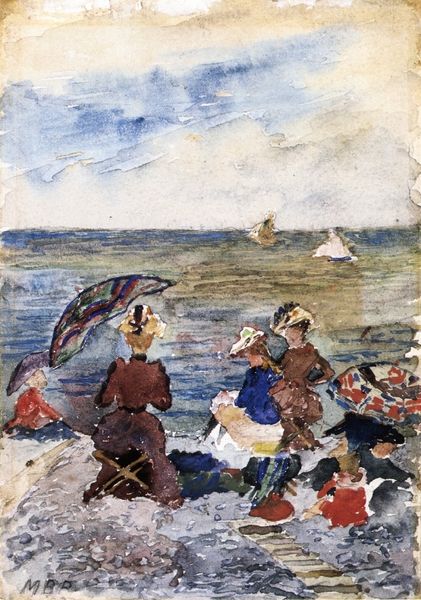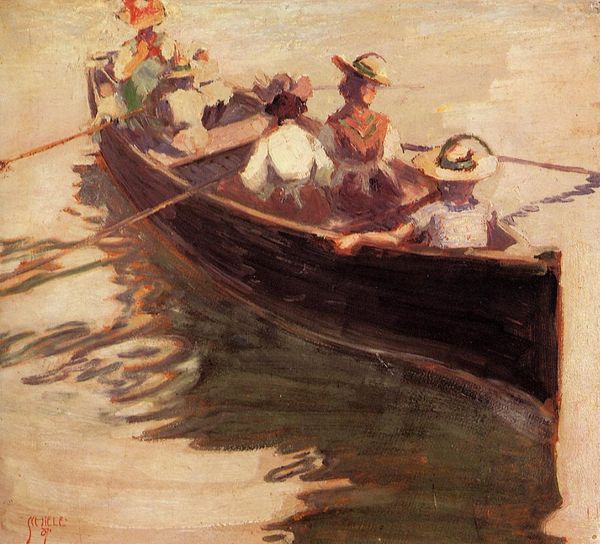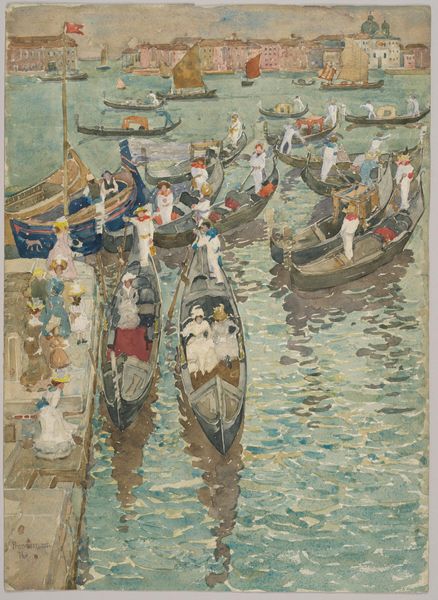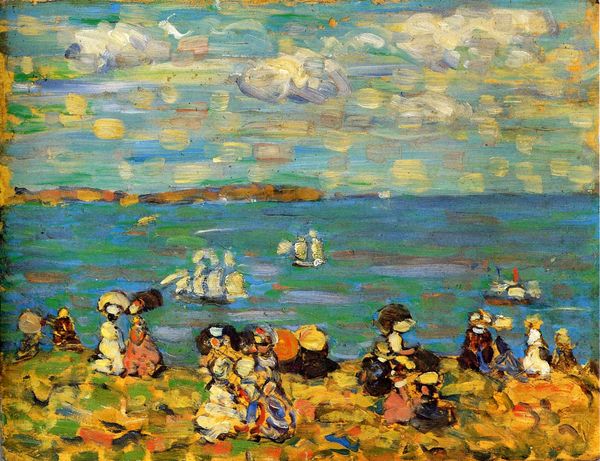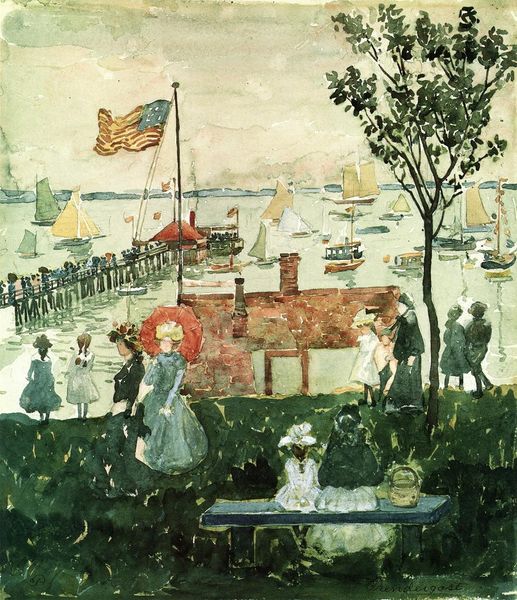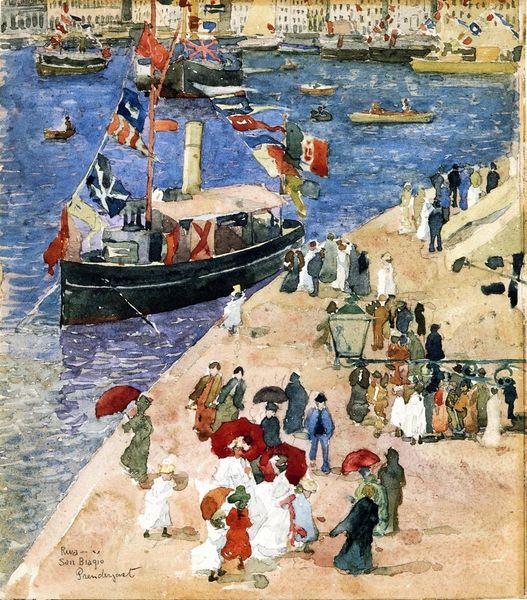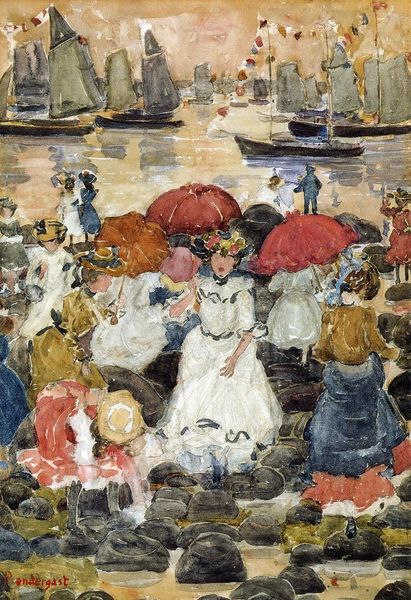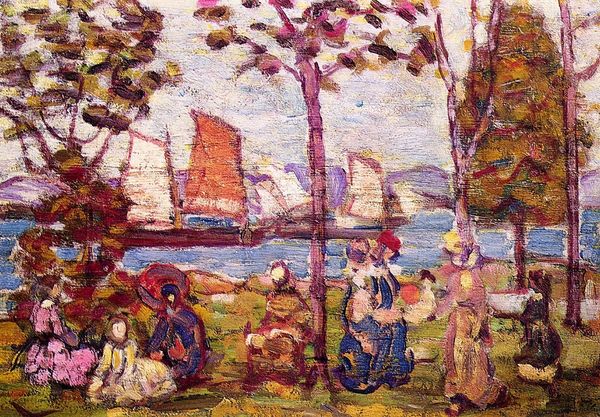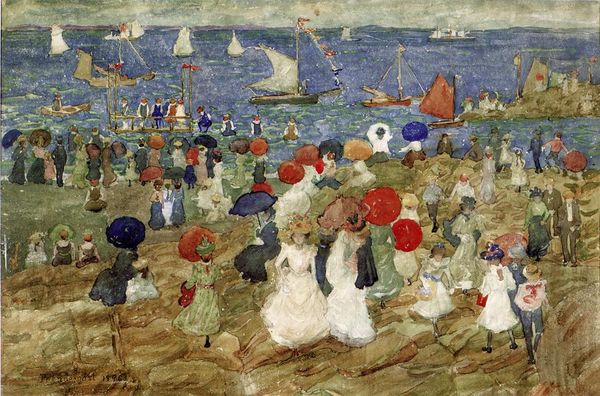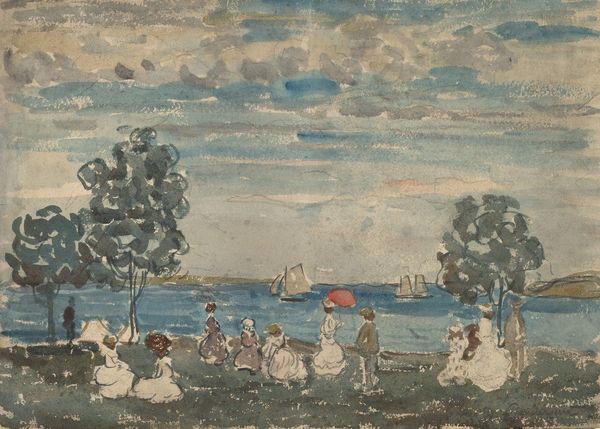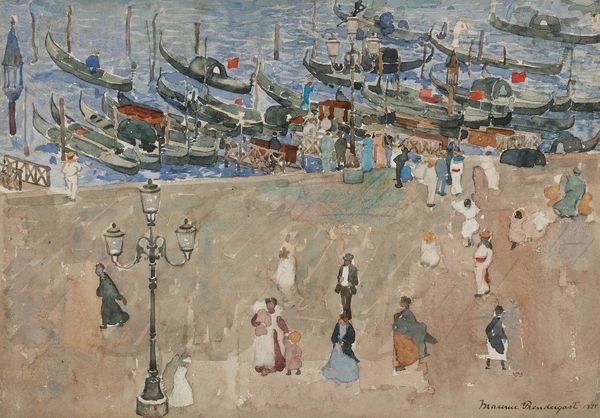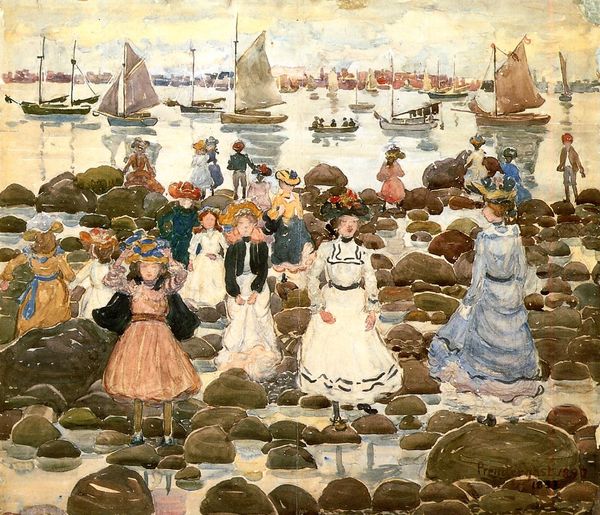
Dimensions: 34.93 x 34.29 cm
Copyright: Public domain
Curator: What a captivating scene. The artwork before us, "The Pretty Ships," sometimes known as "As the Ships Go By," was painted by Maurice Prendergast in 1897. Editor: My first impression is of a breezy day. There's something about the loose brushstrokes that makes me feel like I'm right there, smelling the sea salt and feeling the wind tug at my hair. It’s almost dreamlike. Curator: Prendergast’s rendering is indeed intriguing. The application of watercolor and oil gives a textured, almost stippled quality to the painting's surface, softening the visual boundaries. Note particularly how this technique serves to flatten the perspectival space and prioritize planar organization. Editor: It feels like a memory, the way the figures blend with the landscape. The children in the foreground, with their hats and dresses, look like colorful blooms scattered across the hillside. And the ships, they are like majestic apparitions on the horizon! Are they real, or part of a story? Curator: The juxtaposition between the leisure activities on land and the stoic presence of the ships introduces a rich dialogic. We have on one plane, the social life as spectacle, and on the other, emblems of power and commerce. Consider the semantic charge that the sailboats bring to bear as aesthetic objects. Editor: I love that it feels both nostalgic and modern. There’s something eternal about children playing by the sea, and at the same time, the painting feels incredibly fresh and experimental in its depiction of that joy. It really makes you question where the painting ends and your own memory begins. Curator: Precisely. The dynamism between land, figure and sea encapsulates Prendergast’s astute sensibility to place and period, capturing a singular temporal scene through a highly attuned artistic language. Editor: It has been a true pleasure, examining Prendergast's "The Pretty Ships" from these angles, merging art analysis with subjective musings! Curator: Indeed, quite rewarding! This offers an understanding of art, as more than mere subject representation; rather, art as experience, as memory and as the unfolding of a particular visual epistemology.
Comments
No comments
Be the first to comment and join the conversation on the ultimate creative platform.
